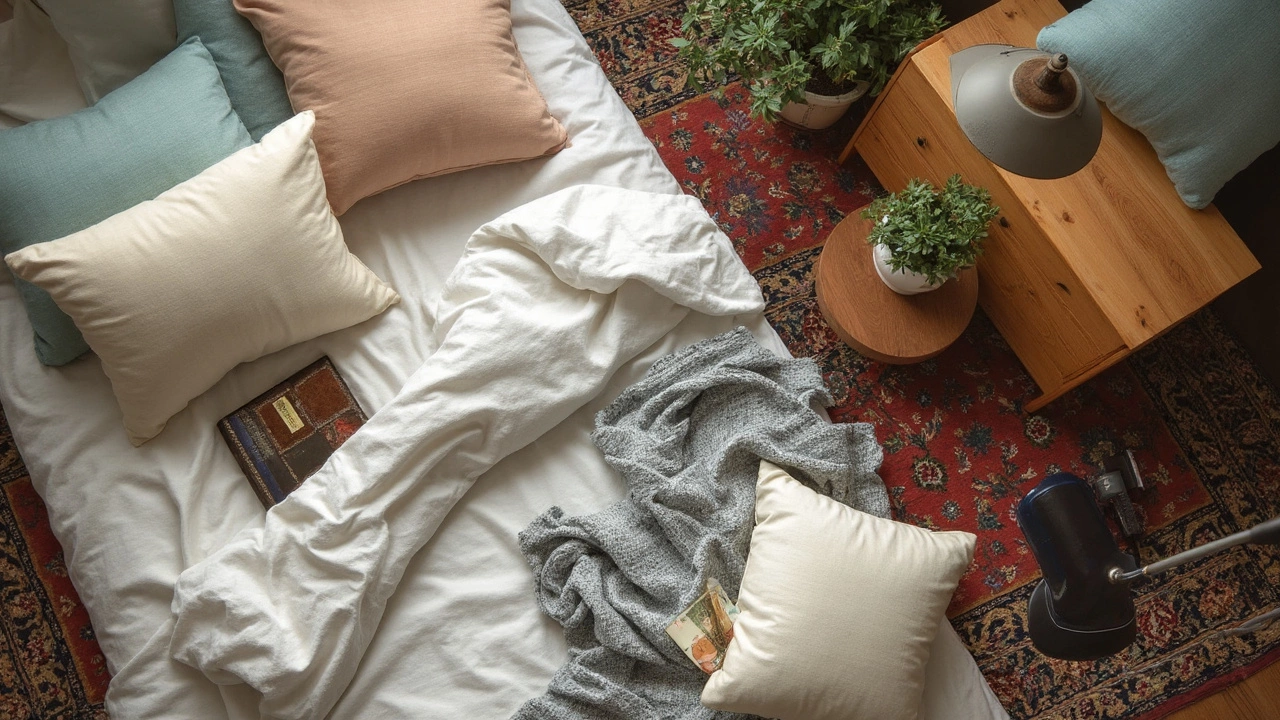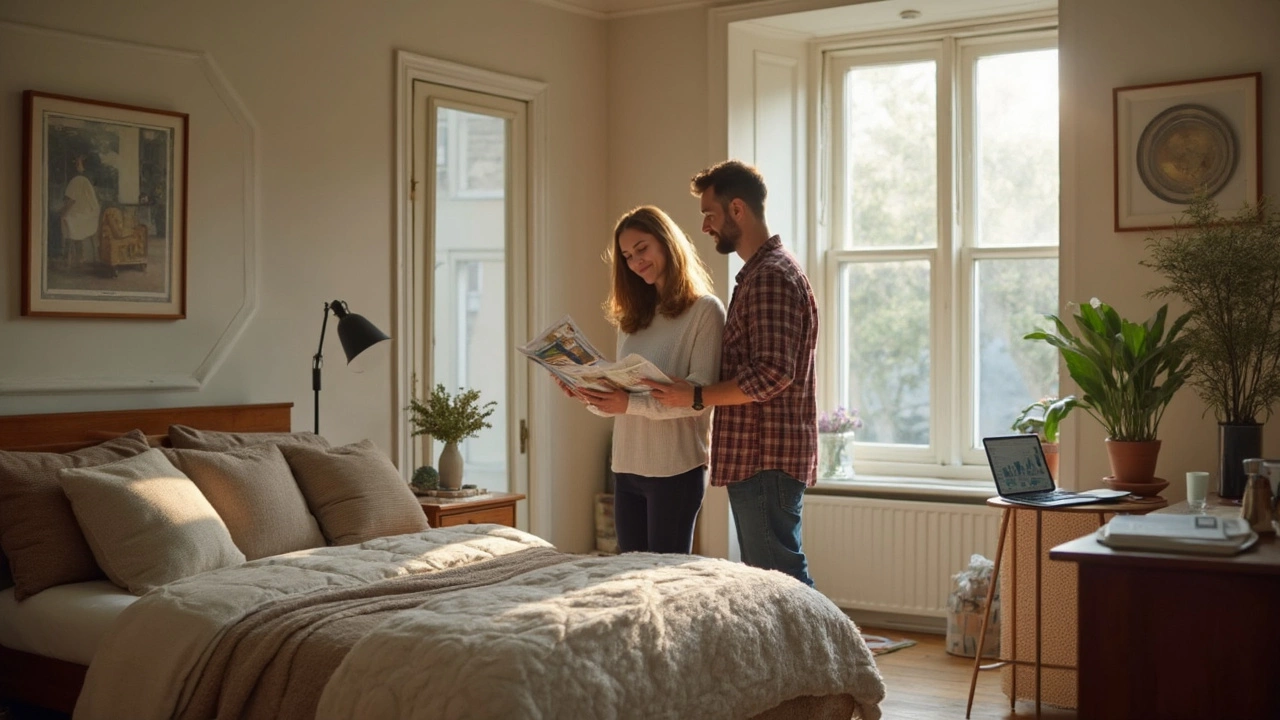Picture this: you've just moved into a new flat in Birmingham or maybe you've finally decided it's time to ditch that wobbly second-hand wardrobe you got from your cousin. The problem? Furnishing a bedroom isn't as simple as nipping to IKEA and matching a pillow to your wall colour. If you don't keep an eye on your wallet, those little extras add up—and suddenly your paycheck has vanished into scatter cushions and mood lighting. But how much bedroom furnishing cost is too much? Are you wasting pounds on trends or investing in quality sleep and style?
Breaking Down the Bedroom Budget: What Really Matters?
Furnishing a bedroom doesn't come with a one-size-fits-all price tag. Your budget swings wildly based on taste, room size, and whether you start from scratch or salvage what you already own. For a no-nonsense approach, think of furnishing costs in three tiers: budget, mid-range, and luxury. Budget buyers (students, young professionals, anyone who nods at a good deal) could get essentials for as little as £600-£1,000, relying on high-street names like IKEA, Argos, or Facebook Marketplace. This nets you a basic double bed, decent mattress, wardrobe, chest of drawers, and a bedside table. Not glamorous, but you've got a place to sleep, store your socks, and perch your morning brew.
Bump up your standards and you'll eye mid-range—expect £2,000-£4,000 for sturdier furniture, memory foam or hybrid mattresses, and maybe a statement piece (think velvet headboard or a vintage dressing table from somewhere like Barker and Stonehouse). High-end bedrooms, skewing towards designer brands or bespoke carpentry, can swallow £8,000 or even more, especially if you can't live without real oak, Italian bedding, and hotel-style mood lighting. But unless you’re a footballer or planning interiors for a four-star B&B, you probably don't need to go there.
Now, here's a fun stat: The Sleep Council says the average Brit spends about a third of their life in bed—that's roughly 26 years if you live till 80. If you break down the price of a good mattress (say, £500-£800) over seven years, you’re spending about 30p a night for a decent chance at waking up with a straight back. Remember, beds and mattresses last longer than trend-led lamps and throws—so this is where your money actually counts. If you're on a shoestring, even local charities sell pre-loved furniture for next to nothing—just check for safe fire labels, especially with mattresses and upholstered stuff.
The Bedroom Essentials: What’s Worth the Money?
Before you start blowing your budget on fairy lights, figure out what you actually need. The essentials? Bed and mattress, naturally. But if you want stress-free storage and a place for your bits and bobs, a wardrobe, a couple of bedside tables, and a decent set of blackout curtains are must-haves. Don’t fall for trends until you’ve sorted these out.
Mattresses are non-negotiable: expect at least £300 for decent foam or sprung, and save yourself trips to the chiropractor. Next, your bed frame—metal is cheaper, wood lasts longer, ottoman beds give you extra under-bed storage, which is a lifesaver in city flats. Wardrobes start at £100 for the most basic, but if you can spend £250-£500, you’ll get something that actually survives more than one house move. Chests of drawers and bedside tables can often be snapped up as sets, meaning better deals. Retailers like John Lewis offer “bundles” that give you two or three pieces at once and can cut costs.
But not everything needs shelling out for. You can update your look with affordable bedding, lamps, and art prints. Soft furnishings—throws, cushions, rugs—morph a bland box room into somewhere you want to actually hang out. Independent shops in Birmingham’s Jewellery Quarter or Digbeth sometimes have quirky bits you won’t see in everyone else’s house.
For those battling small spaces (welcome to most British terraces and city apartments), buy clever storage: under-bed drawers, hooks for the back of doors, or wardrobes fitted to awkward alcoves. If you’re handy, check out upcycling—repainting old furniture from eBay or adding new handles can save you piles and deliver a smug “I did that” feeling.

How to Stretch Your Bedroom Furnishing Budget
Truth is, few people buy an entire bedroom set in one go unless they’ve just won the lottery or are kitting out an Airbnb. Most chip away at it, prioritising essentials and upgrading the odd piece when pay allows. Here’s how to get the most from your cash.
- Prioritise. Spend most on bed and mattress; skimp (but don’t scrimp) on things like bedside tables or lamps, which you can easily upgrade later.
- Time your buys. End-of-season sales (think January and late summer in the UK), Black Friday deals, and clearance sections unlock real savings. Bedding and cushions drop in price after Christmas.
- Second-hand treasures. Charity shops, Facebook Marketplace, and gumtree.com can be goldmines for solid wardrobes and drawers—sometimes barely used and at a quarter of the price of new.
- Mix price points. Blend a high-quality mattress with budget IKEA drawers, then add one eye-catching piece (maybe a vintage mirror) for personality.
- Ditch matching sets. The "bedroom suite" look is out—mixing pieces creates a lived-in vibe and often comes cheaper. Plus, mismatched furniture’s less likely to show wear and tear.
- DIY where you dare. Flatpack assembly isn’t everyone’s cup of tea, but it’s cheaper than delivery and installation. Even adding a lick of paint or new knobs to that bland dresser makes a huge difference.
- Look for cashback. Comparison sites and credit cards sometimes offer cashback or points on big purchases; not huge money, but every little helps.
If you’re overwhelmed, start with the biggest investment—usually bed and mattress—then fill in the rest over a few months. When in doubt, less is more. One tidy, uncluttered space beats a room packed with mediocre stuff any day.
Common Mistakes and Smart Bedroom Shopping Tricks
Most first-timers fall into peace-of-mind traps: splurging on pricey wardrobes they never organise, forgetting about lighting, or buying loads of little “trendy” extras that don’t last. One big tip: Avoid impulse buys. If you love an item, commit to it even if it means waiting a bit longer—quality pieces don’t scream “replace me!” after two years. Cheap beds creak, sag, and eventually become landfill.
Lighting matters. Overlook it and your room looks flat, no matter how fancy everything else is. Grab a mix: a central ceiling fixture for general brightness, bedside table lamps for mood, and maybe string lights or a reading lamp. Even a £10 lamp from Wilko or Aldi can glow up your space.
Don't ignore wall space. Art prints, floating shelves, or a single standout mirror do wonders and don’t have to cost a fortune. Birmingham’s Custard Factory Sunday market and smaller art fairs are great for one-off finds that don't eat your whole pay packet.
Hold off on buying a massive wardrobe if your room’s small—you’ll block sunlight and end up cramming clothes into drawers anyway. Measure before you buy. Laying out masking tape on the floor helps you see if that “bargain” king-size bed will actually fit (it’s amazing how a double bed can swallow a small room). Bedding’s another biggie; two sets, alternating for fresh sheets every week, is plenty. Go for natural fibres like cotton or linen, which last longer and breathe better.
Want to keep track? There are free online room planning tools—just upload your room size and play around placing virtual furniture. It beats lugging home a wardrobe only to find it blocks the door. Spreadsheets, or even an old-school notebook, help you stick to your budget. Keep all the receipts, especially if you buy expensive items—returns policies vary, and you’ll kick yourself if you get stuck with a dud lamp because you lost the slip.
You don’t need to splash out to get style—a handful of thoughtful pieces, a little planning, and some patience will take you further than any shopping blowout. Next time you debate between that velvet headboard and a new mattress, just remember where you’ll spend those 26 years sleeping.


Write a comment